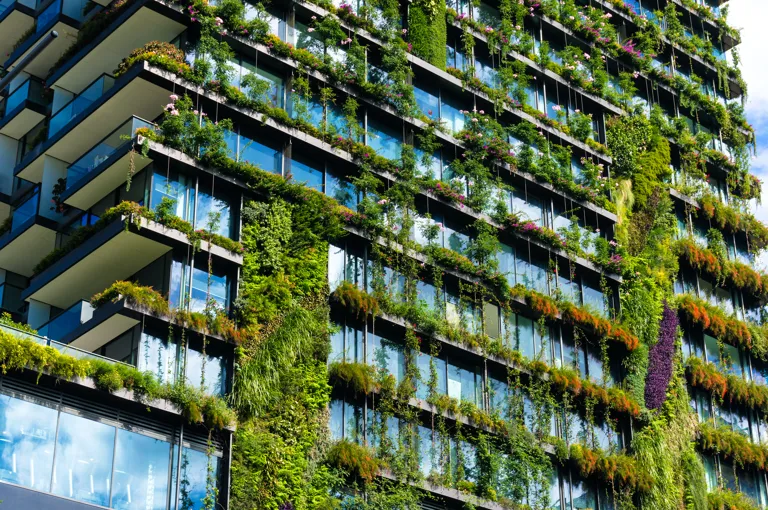What the construction industry is doing regarding climate change challenges
The construction industry is facing one of the biggest challenges of our time: On the one hand, a growing global population and increasing urbanisation are making the need for housing, infrastructure and commercial buildings greater than ever.

On the other hand, there are huge climate challenges and compliance is required with increasingly stringent requirements defined by the EU, national authorities and legislators. So, what measures are being taken by construction companies?
Sustainable design and life cycle assessments become crucial requirements
More and more buildings and city districts are now being designed with sustainability in mind. This doesn’t just relate to the choice of materials and construction techniques, but also to how buildings interact with each other. This includes everything from green roofs and façades, which can reduce a building’s energy needs, to smart energy systems that optimise energy usage. There are examples where everything from waste management to energy production has been integrated, to ensure the creation of a sustainable living environment. New urban districts can be designed to reduce the need for passenger and freight transport. The 15-minute city is a concept that has become a guiding principle for many modern urban planners.
Conscious material choices and low-consumption buildings are key ingredients
The construction of new buildings often requires a life cycle assessment (LCA) to obtain planning permission. This includes assessment of the climate and environmental impacts. Clever design and material choices form the basis for energy-efficient, low-consumption buildings that utilise renewable energy. Energy requirements can be reduced by optimising the building volumes, orientation and envelope, and by choosing energy-efficient technical systems. It is also possible to consciously reuse building materials and recover materials and details during demolition.
Carbon dioxide emissions produced during running can be reduced in smart buildings
Just over a quarter of the carbon dioxide attributable to the construction sector is emitted once a building is in use. This is known as operational carbon and consists of all the carbon dioxide generated as a result of covering the energy needs of running the building, including for heating, cooling, lighting, ventilation and lifts. A lot is being done in this area to reduce the climate impact by using smart technology and renewable energy, such as installing solar panels on roofs. You are welcome to read our article on smart buildings.
Embodied carbon dioxide is a growing challenge
The production of building materials such as concrete and steel accounts for 11% of carbon emissions, so the construction industry is focusing increasingly on what is known as embodied carbon. This refers to all the carbon dioxide that is ‘built into’ buildings and infrastructure during their construction phase. This includes emissions from extraction, manufacturing, transport, construction and demolition. Unfortunately, an increased amount of embodied carbon dioxide is expected in the future, due to increasing construction volumes. The initiatives to document the extent of embodied carbon and promote improvements include a tool called the Embodied Carbon in Construction Calculator (EC3), which has been developed by companies including Skanska and Microsoft. This tool can be used to measure the embodied carbon dioxide in building materials and thus enables more climate-smart choices to be made. The Carbon Leadership Forum is at the forefront regarding encouraging the use of more climate-friendly building materials.
Proptech start-ups show the path to a more climate-smart industry
There is also a trend of increasing investment in proptech start-ups, which aim to make construction processes more efficient, sustainable and safe. Examples of these include companies that use new technologies to make construction processes more efficient, such as Toggle Construction, which uses robots to pre-assemble rebar in concrete. New materials with a lower carbon footprint are being developed by companies such as Arqlite, which makes building materials from recycled plastic. We at iBinder Group are also an example of a proptech company that is helping bring about construction that is more climate smart.
In summary, construction companies are taking a number of important steps to reduce their climate impact, including focusing on sustainable design and introducing new materials and technologies. Considering the high proportion of carbon dioxide emissions caused by the construction sector and the increasingly stringent legal and regulatory requirements at the national and global levels, this is a good trend for many reasons.
